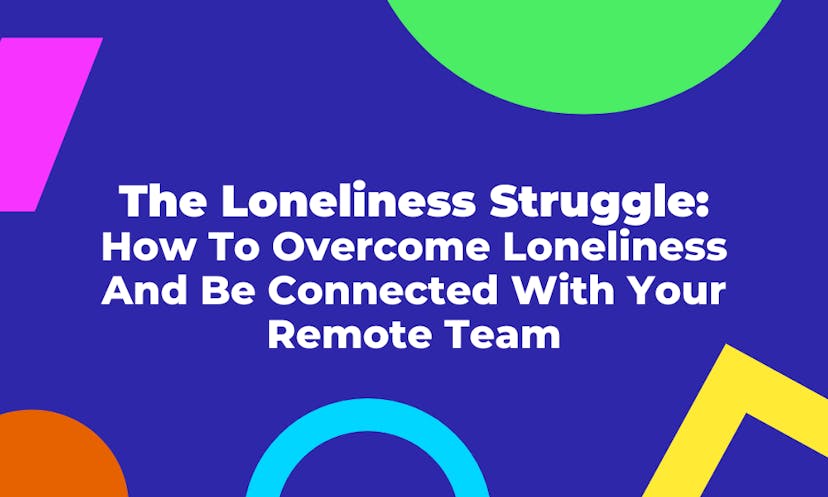Why employee engagement matters and you should invest in It
Published: 20th February 2023
Let’s be honest, if you ask most employers, they'd probably tell you that employee engagement is not their top priority. That’s a big mistake.
Here’s why I think so:
Even before “The Great Resignation” of 2021, it's been hard to find good staff, let alone keep them happy and motivated.
Research has shown that engaged employees are more productive and deliver higher customer satisfaction. So you ask, rightfully, why aren't companies investing more time and money in employee engagement?
In my opinion, it boils down to an underestimation of the value of an investment in engagement. This is a mistake, as you will then have to react quickly if your staff are unhappy, unengaged and in the worst case scenario, leaving the company.
Therefore, it’s advisable to be a proactive leader and lay out the foundation for a happy and engaged employee experience.
In this article, I will explore the often underestimated benefits of investing in employee engagement and thereby strengthening your employee and business foundation.
You will understand the benefits better if I clarify the terminology…
What Actually Is Employee Engagement?
There is a lot of talk about employee engagement these days, and as mentioned above, with good reason.
Having engaged employees is a critical part of any company's success, but what exactly does it mean to be "engaged" and how do you know if your employees are engaged?
According to the global business consulting company Gallup, engaged employees are those who are involved in, enthusiastic about, and committed to their work and workplace.
They feel a sense of connection to their company and tend to stay longer than other employees. They're also more productive and less likely to leave their job for another one.
Gallup estimates that there are 35 million engaged workers in America today, which means that there are nearly twice as many unengaged workers—67 million—giving them a majority of the workforce.
But why should you bother about engaged employees?
The Benefits Of Employee Engagement
As touched upon, the main benefits of having great employee engagement are that engaged employees:
- Are happier
- Feel more valued
- Have a stronger sense of purpose
- are more likely to stay with an organisation
These are crucial benefits to your business as they decrease churn and allow you to have a more stable foundation.
As employee engagement does not “work on its own” you have to invest time and money.
Let’s explore why.
Why Should You Be Invested?
According to research by Oxford University, workers in a good mood are 13% more productive than their counterparts—they accomplish more and do so efficiently over longer periods of time, which helps boost the bottom line.
On top of being able to get more done and faster, they also tend to come up with solutions more quickly because they genuinely care about what they’re doing and feel like an integral part of something bigger than themselves.
In addition, investing in employee engagement benefits recruiting new staff.
Employee engagement programs and tools can be used as a reward for continued commitment and loyalty. This can have a positive impact on your company’s reputation with potential new hires, who are often concerned with how their employer treats existing staff.
For example: if you offer great training opportunities, flexible working arrangements and show that you take team building seriously it may act as incentives for employees to stay with you long term.
Now that you know how important employee engagement is and why you should be invested, you might ask: what should I do?
Let’s dive into it.
What Are Activities For Employee Engagement?
There are many things that you can do to increase employee engagement.
Here are some of them:
- Recognition and reward programs
- Mentoring and coaching
- Training, development and team building activities
- Involving employees in decision-making processes
All these aspects have one theme in common: Show your employees that you care.
Some of these suggestions take a lot of time and might involve creating new internal processes, like establishing reward programs. But others can be implemented quickly and easily, without having to stretch your wallet, like team building activities.
Here’s what you can do today:
- Inform your team that you would love to strengthen the team spirit
- Create a weekly team quiz
- Play, laugh, and have fun
- Talk about your experiences afterwards
As you see, you do not have to invest big sums. And it does not have to take ages, either. You can create an atmosphere of engaging employees in a matter of minutes by using the right tools.
So now you know
Employee engagement can come in many shapes and sizes. It's not just one thing.
Successful employee engagement is the result of implementing a sustained and focused initiative that targets all three drivers of engagement: emotional, physical, and intellectual. It's challenging but achievable.
Especially when you use the right tools, it will be worth the time and money you invest in it.
Elevate your team's social experience with Doozy’s Team Celebrations - celebrate key milestones and dates in Slack and bring your team closer together. Try it for free today!
Image Credit
Photo by Brooke Cagle on Unsplash

Jesse K.
Jesse helps companies working remotely create a social connection by providing trending topics & inspiration via remotenactive.com

